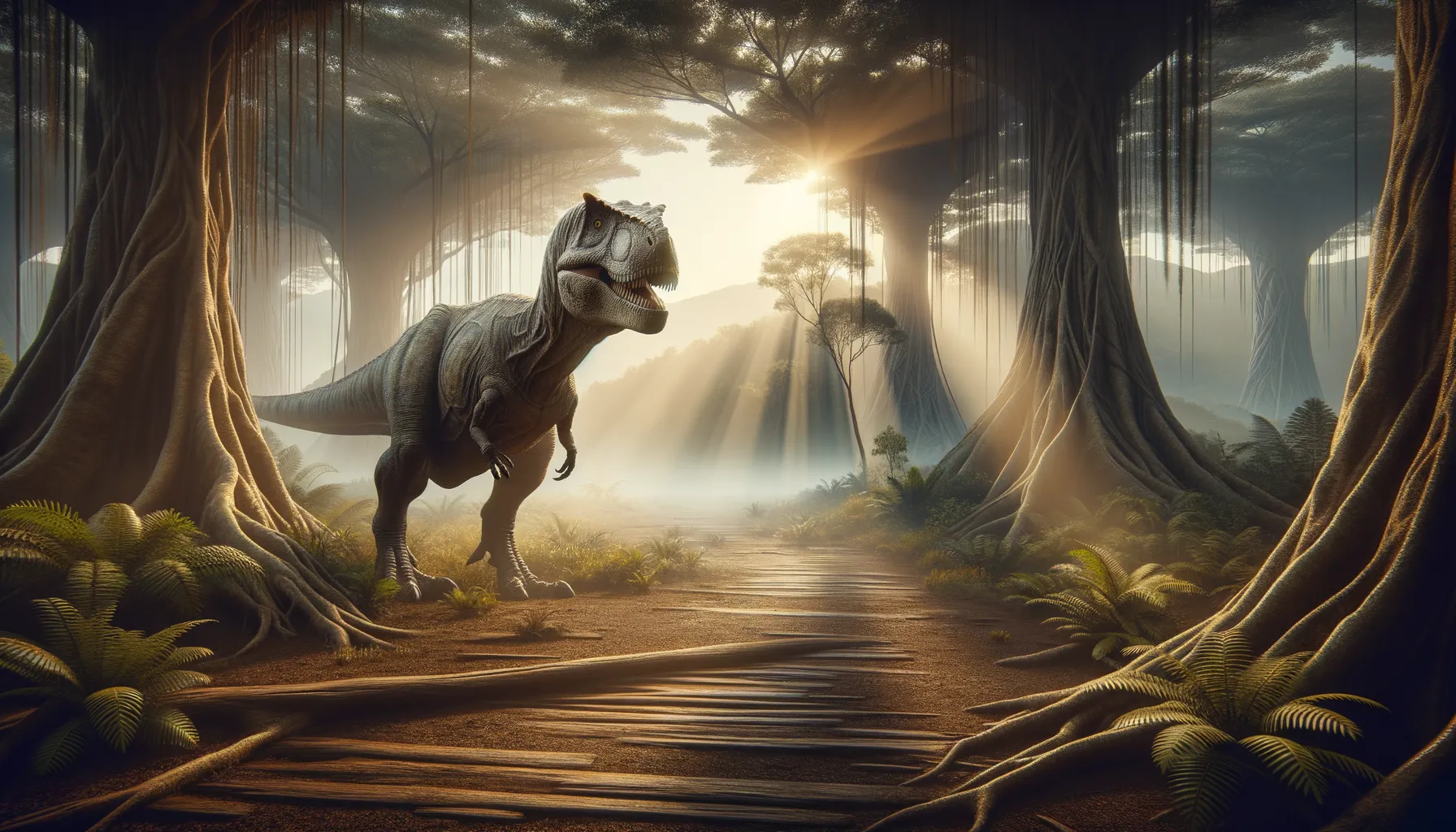
Sugiyamasaurus
Mystery cloaked in prehistoric shadows
Period
Cretaceous
Length
Unknown
Height
Unknown
Weight
Unknown
Sugiyamasaurus is a poorly known dinosaur species due to its status as a nomen dubium, meaning it lacks sufficient unique features to be distinctly classified. Its name comes from discoveries attributed to findings in Asia, but detailed information about this dinosaur is scarce. Paleontologists have yet to thoroughly investigate any distinct characteristics that could accurately place Sugiyamasaurus within the dinosaur family tree.
Diet
The diet of Sugiyamasaurus is not well-documented. It is assumed to have been herbivorous, similar to other dinosaurs of potential similar classification.
Hunting
Sugiyamasaurus is presumed to have been non-predatory, indicating passive foraging behavior. More research is required to confirm its exact dietary habits.
Environmental challenges
The specific environmental challenges faced by Sugiyamasaurus remain unclear due to its uncertain classification and discovery. The Cretaceous period was a dynamic time with fluctuating sea levels and volcanic activities that could have impacted its ecosystem. Extinct herbivores like Sugiyamasaurus typically faced seasonal food shortages and competition from other species. Climatic shifts towards the end of the Cretaceous period could also have further stressed its adaptive capabilities.
Speed
Unknown
Lifespan
Unknown
First discovery
Sugiyamasaurus has not been formally described and is considered a nomen dubium.
Fun Facts
- Sugiyamasaurus is named after a Japanese paleontologist, Kohei Sugiyama, who made significant contributions to dinosaur research.
- The Sugiyamasaurus roamed the Earth during the Late Cretaceous period, around 90 million years ago.
- This dinosaur was a herbivore, meaning it primarily ate plants and leaves.
- Sugiyamasaurus likely had a beak-like mouth, which was perfect for stripping leaves off branches.
- Fossils of Sugiyamasaurus have been discovered in what is now part of Japan.
- As a member of the hadrosaur family, Sugiyamasaurus is related to other 'duck-billed' dinosaurs.
- Sugiyamasaurus might have lived in herds, offering protection against predators through their numbers.
Growth and Development
Little is known about Sugiyamasaurus's growth and development due to the limited fossil evidence. Like many herbivorous dinosaurs, it likely hatched from eggs and underwent significant growth spurts in its early years. If it were similar to other herbivorous dinosaurs, it may have reached maturity relatively quickly to avoid predation.
Habitat
Sugiyamasaurus possibly lived in a variety of Cretaceous environments, though exact habitats remain speculative. It might have roamed areas dominated by lush vegetation, assisting its herbivorous diet. Rivers, forests, and plains common in that era would provide suitable living conditions. The lack of concrete fossil evidence leaves much to learn about its specific environmental preferences.
Interaction with other species
Due to its ambivalent classification, specific interactions with other species are not well understood. Typically, herbivorous dinosaurs engaged with other members of their species for social protection. Predators of the time could include more prominent carnivorous dinosaurs, with Sugiyamasaurus likely employing avoidance tactics. The ecosystem it inhabited probably included various other plant-eaters and carnivores, creating a complex food web.
Natural lifespan
Estimates about its natural lifespan range from several decades, similar to medium-sized dinosaur assumptions.
Reproduction
Assumed to be similar to other herbivorous dinosaurs, Sugiyamasaurus likely reproduced by laying eggs in nests. Parental care patterns are uncertain, but it might have included basic protection until the juveniles gained mobility. Reproductive cycles could have been influenced by seasonal changes, dictating breeding and nesting periods.
Social behaviour
The social behavior of Sugiyamasaurus can't be precisely determined. It may have lived in groups for protection against predators, a common trait in herbivorous species. Social hierarchies, if present, probably focused on safety and division in foraging tasks. Further fossil evidence is necessary to confirm these social structures.
Fossil locations
There are scant records indicating specific fossil sites for Sugiyamasaurus, contributing to its status as a nomen dubium. Limited findings have been attributed to parts of Asia. More substantial discoveries are needed to verify its existence and ensure accurate classification.
